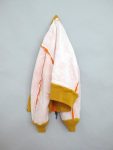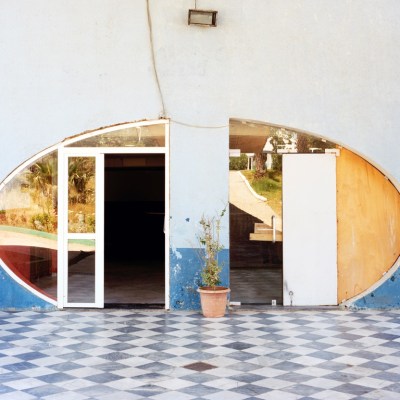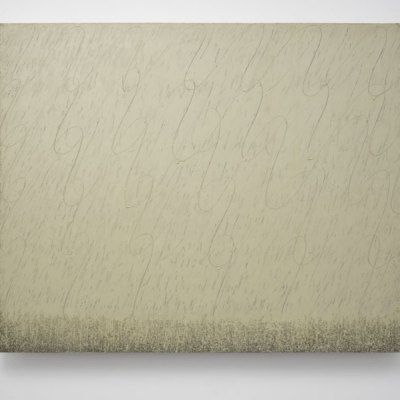Like everyone, arts hacks make mistakes. Some – typos, factual slip-ups and other errata – can be forgiven. Others, however, will forever weigh heavy on the head of the miserable soul who committed them. And I should know.
About a year ago, I turned up to the launch of an exhibition at Marylebone’s White Rainbow gallery by Japanese artist Youki Hirakawa. It was a beautiful show and, all told, a jolly event. After 10 minutes or so, I was introduced to Hirakawa himself, who gamely offered to walk me round the show.
We’d almost completed our tour when I felt my foot connect with something solid and heard a sharp crack. I plunged my gaze from wall to floor, and saw a puddle of water and a broken glass tumbler. Outraged, I turned to Hirakawa and groaned.
‘What idiot leaves a glass of water on the floor of an art gallery?’ I asked, exasperated. Hirakawa’s grimace should’ve told me all I needed to know.
‘I did. It was part of the exhibition.’
Out of shame, I didn’t go back to White Rainbow until last week, when a colleague persuaded me that the gallery’s new Shigeo Anzaï exhibition was a hot ticket and – crucially – that it included no liquid-based readymades for me to destroy (until 18 June).
My source spoke the truth. The show is a series of Anzaï’s monochrome photographic portrait of artists from the late 1960s to the present day, taking in everyone from Yayoi Kusama to Damien Hirst to Laurie Anderson. While it’s easy enough to get the impression you’re stuck inside a coffee table book on late 20th-century conceptual art, the best stuff is terrific fun.
My favourites are two pictures of Gilbert and George from the mid 1970s. In the first, they are captured standing in characteristically inscrutable poses outside the door of their Fournier Street home – where you can still see them today before they head to dinner in Dalston. In the second, however, we see them loafing awkwardly down (I think) Shoreditch High Street, no doubt feeling a little violated by the fact that a mischievous Barry Flanagan has wedged himself in between them.
*
I don’t know if you saw Sterling Ruby’s supremely vacuous art and fashion crossover show at Sprüth Magers (now closed) but to me it seemed conclusive proof that scenester artists shouldn’t dabble in couture. This was why I approached Simon Mullan’s show at PM/AM with caution (until 30 May). The first press release I received set off all the alarm bells in my system: Mullan, who is based between Hackney and Berlin (naturally) was essentially being marketed on the strength of a set of bomber jackets he had ‘skinned’ and pinned to the gallery walls. Radical, I thought witheringly.
Inside, though, I found an early – and slightly gauche – digital video thudding away on the gallery’s biggest wall, a huge, dressing screen-like sculpture created from a grid of metal bars, and, best of all, an ingenious series of abstract paintings created from bathroom tiles and coloured grouting. Immediately, this last group threw me back to Mondrian, Arte Povera and the Bauhaus. More to the point, the craft value of these works is no gimmick. They are sincere, inventive and really rather beautiful.
*
Every morning in my suburb, dawn breaks to the sigh of a jet airliner descending into Middlesex. To the west of where I live, residents are up in arms over the proposed third runway at Heathrow airport. Frankly – forgive me – I don’t give a damn either way. I love the sound of engines running overhead: on the ground (or at least, from my bed) it conjures up a romance entirely absent from the horrors of the pressurised cabin and the intrusively reclining seat. I’ve always wondered where the first flight of the morning comes from. I’ve never bothered to investigate.
One Sunday a few weeks ago, I woke up uncharacteristically early and, for reasons beyond me, decided to walk out to the airport, with a possible view to buying a ticket and jumping on the first flight that appealed. I knew I would never do it, and, for that matter, that I’d never even make it to Heathrow on foot. In the end, I made it as far as Brentford – not, as you might know, the most romantic of destinations.
What I did see, though, was the lesser documented side of London’s construction boom. Commentators tend to dwell on the more visible eyesores of central London, but from Battersea to Barnes, the riverfront is blighted by bad development. Largely built between the 1980s and the millennium, the ziggurats of suburban west London are, if you like, a trial run for the glass and steel colonisation of the city centre. They are also an aesthetic lesson in why we can’t let this happen to the rest of our city. We really can’t.





